Memory
Obituary
Photo Mail remembers
Photographers and
Their contribution
As well as tunes into
The historical perspectives that
Influence contemporary
Photographic practice and
Its aesthetics
Photographer Punalur Rajan
passed away on 15th August 2020.
This obituary by Abul Kalam Azad
was originally published in
Deshabhimani Malayalam on
20th August 2020
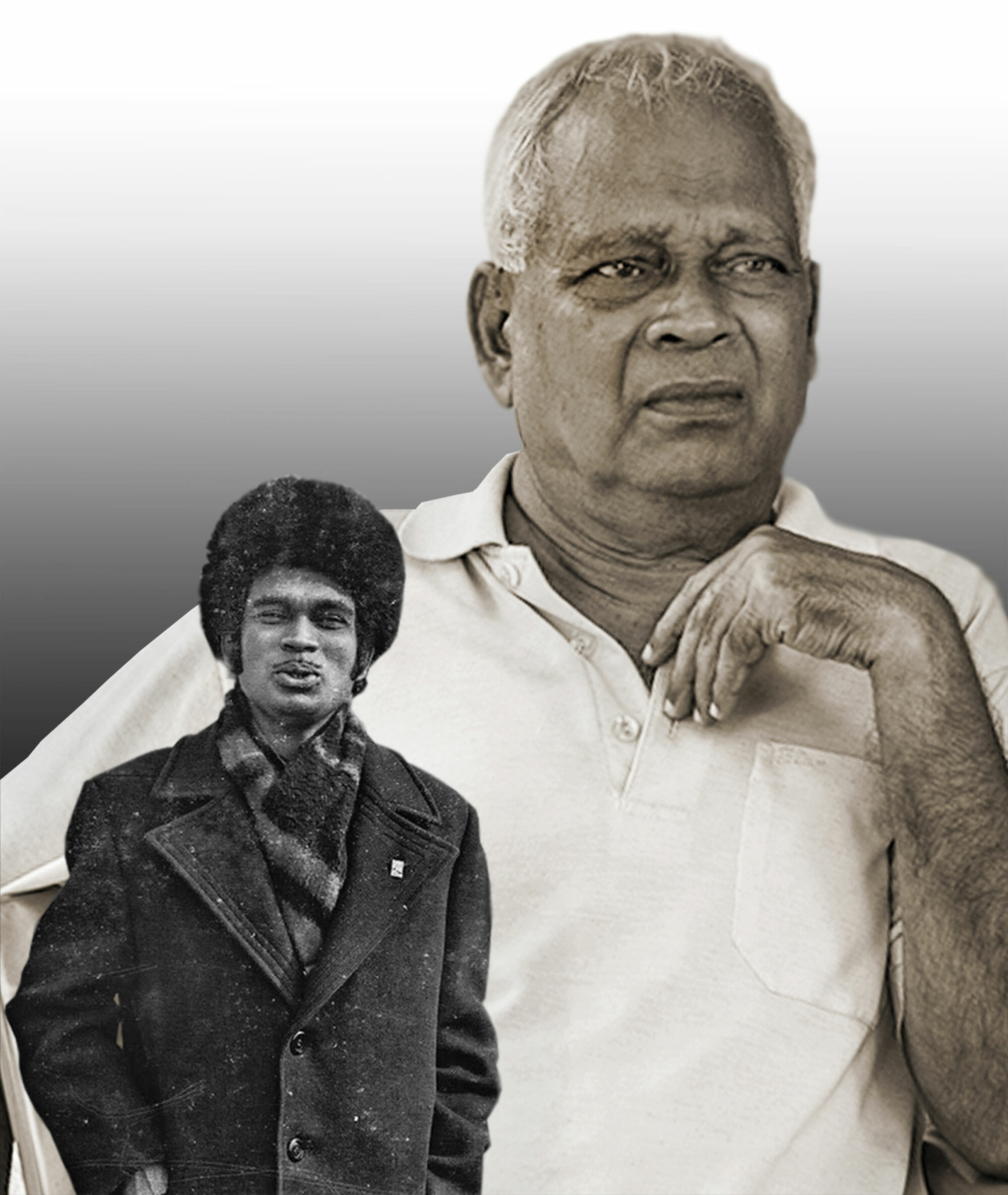
Punalur Rajan © Hariharan Subrahmanian | Insert: Punalur Rajan in Moscow 1980s, Photographer Unknown
The artist, and his/her viewers develop an invisible bond that is profound and intimate. Usually, this unfathomable bond develops long before a personal meeting happens. The foundation of this bond is laid through the dialogues one has with the artist’s creations. I can still vividly remember my young days when I first saw a photograph shot by Punalur Rajan. It was of Vaikom Mohemed Basheer. Rajan has taken several photographs of Basheer, but the one I saw first is etched in my memory, like the first rays of dawn. That widely published photograph captured the essence of Basheer in its entirety. It gave the first human glimpse to one of the favorite nostalgia of Malayalees. The frame had only Basheer’s face, leaning on his hand, looking solemnly – as if he was engrossed in deep thought. It is a beautiful composition with fine details and metaphor; what spoke in volumes were the inclusion of the fingers that wrote those timeless words and the exclusion of everything else. It was poetic, intimate, and consuming. What would have been going on inside the expansive mind of Basheer in that precise moment? While looking at that photograph, one would automatically ponder over the persona of Basheer that shines through the non-candid shot. But, that’s not all. It also leaves behind a lot of questions about the photographer who had captured and visually narrated this immortal moment. In that photograph, Basheer is both the subject of a well-studied research matter and a centripetal point of total adoration. What was the relationship between the photographer and his subject? How could Basheer lose himself in a thought so deep when being pried upon by the consuming eyes of Rajan’s camera? Somehow, the photographer becomes invisible, as the entire thrust is on the subject, as if Rajan’s presence is engulfed by Basheer. That much involvement Rajan had with the subjects he had photographed.
Rajan’s close relation with Basheer is a known story today, but in those young days, it was a matter of curious mystical mystery. It provoked great interest in me too, especially because I was waddling my way into the ocean of the awe-inspiring photographic medium and its diverse expressions. After this one photograph of Basheer, I came across several photographs shot by Rajan – each emphasising the intimate and poetic nature of his creations. My father had subscribed to Janayugam, edited by Rajan’s maternal uncle Kambisseri Karunakaran, which published Rajan’s photographs regularly. Kambisseri was an important influence in Rajan’s life and he seeded in him the communist political ideology. While the activism of Kambisseri wreaked havoc, especially after the Sooranad case in which four policemen were murdered by Thoppil Basi, Rajan’s family was untouched, considering their legacy of Mundakkal Aasanmaar lineage. But this did push the family to shift from his paternal village Soornad to Punalur. They had vast stretches of land and properties in Soornad, which they had to leave behind. Almost in no time, the family had lost all its wealth, but their commitment to the communist ideologies made them remain strong and stay on the socialist path.
The Mundakkal Aasanmaar lineage had centuries of interest in art and music, and Rajan inherited this true wealth. Rajan’s father had a 120mm Rolleiflex camera with which he started taking photographs. He also opted to join the Ravi Varma Institute of Fine Arts in Mavelikkara to learn painting. With the diploma degree, he got job as an artist at the medical college in Kozhikode, a job he held until retirement. When Kambisseri started publishing Janayugam, he didn’t have sufficient resources to hire a photographer, and it was Rajan’s photos that adorned every issue. The realistic, well-composed, almost unedited, aesthetically straightforward, and minimalistic photographs of Rajan became very popular. He started photographing the United Communist party’s events in the State, and his commitment to the ideology was revealed in every frame that he had shot.
The Communist Party’s split was a turning point of sorts. It had a tremendous effect on almost all ardent party members. Rajan grew up during a socially turbulent period when oppression was the norm. The consolidation and resistance geared by the communist comrades was the anchor that helped him to navigate the storm that the society was facing then. He was also part of the Kerala Peoples’ Arts Club (KPAC), the theatrical movement that emerged as a spontaneous coming together of left-leaning youths of the 50’s. It was Kambisseri who held the association together. Malayattoor Ramakrishnan too was at the forefront of this amazing movement which popularised communist ideas through its dramas, roadshows, and kathaprasangams. This activism gave Rajan his identity – an inner direction to choose and shoot his subjects in a unique way. After the split, he leaned towards the CPI.
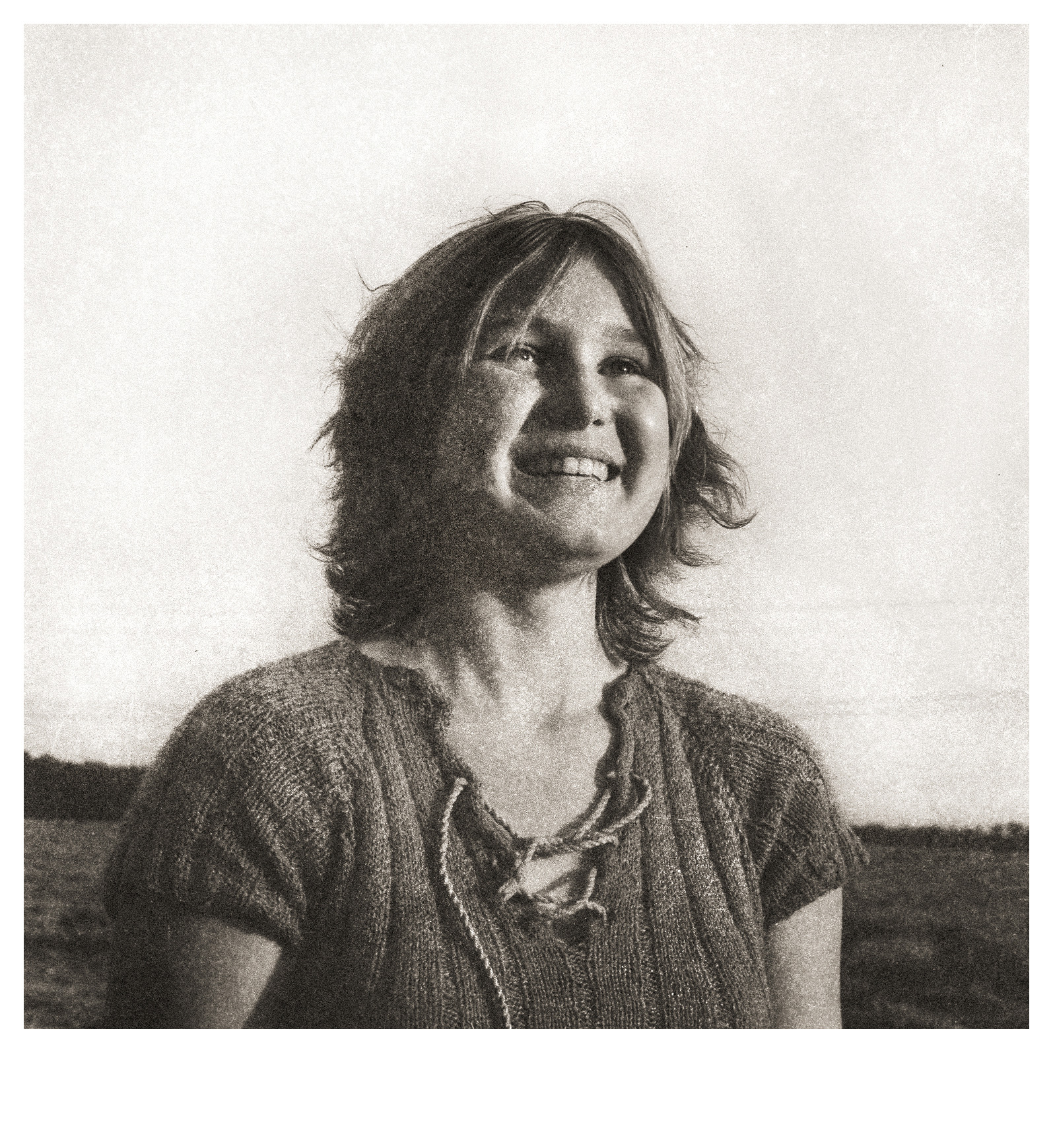
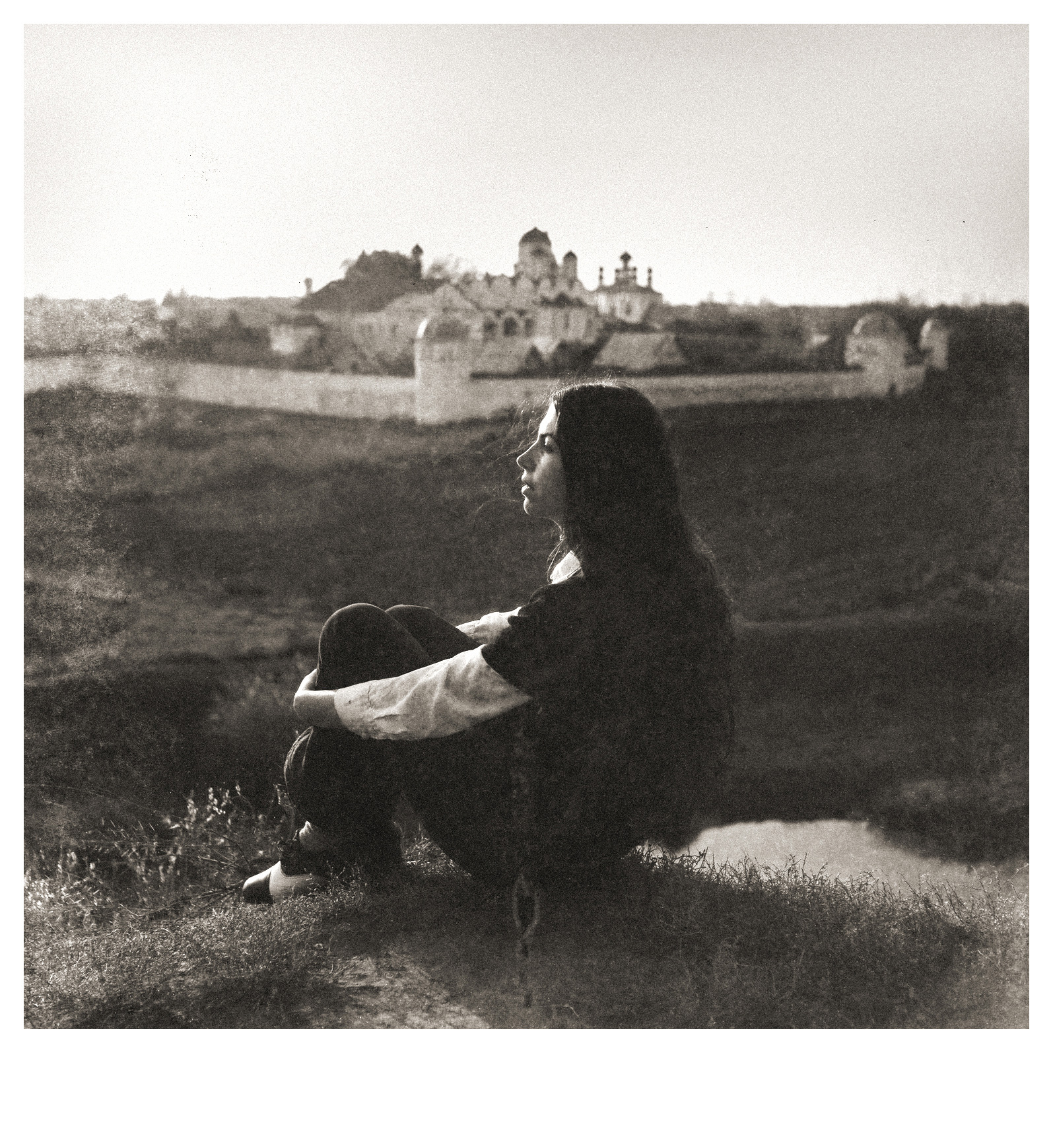
Russian Portraits © Punalur Rajan
Before the split, during the Party Congress at Kochi, late comrade Rajeswhara Rao had asked Rajan to photograph for Pravada, the official newspaper of the communist party of the Soviet Union. The photographs that Rajan took of the event were a hit and were published widely in Russian journals. A few years after the split, KPAC, which was controlled by the Communist Party of India, decided to produce cinema to further its vision among the people. The party sponsored Rajan to study the art of cinema in the prestigious All Union, Moscow. He was selected, particularly because of the popularity he received for the photographs he had shot for Pravada. This was another remarkable period in the career and life of Rajan. It was in Moscow he got exposed to the masters of cinema. He was taught by Tarkovsky, he discussed Parajanov and Eisenstein and endlessly watched the classics from around the world. Of all, it was Vittorio De Sica who impressed him much. Rajan was blown away by what he saw – realism expressed in every frame of the Bicycle Thieves. It was a period of revelatory transformation and he came to understand realism to be experienced and expressed as every moment of reality rather than a style used only for the sake of movie making. There he made lasting friendships, widened his connections, and further sharpened his skills. The influences of this International exposure and art community could be visible in his later photographs. Rajan was a firm believer in the Soviet Union and he saw a potential in it, which strengthened his own ideological identity. The fall of the Union was another event that greatly affected Rajan and his photographic career.
Upon return, he did make a few documentaries – one a 30-min about Com. EMS. For making this film, he had bought Bolex, an expensive movie camera which cost about Rs25,000 then. He had handed over the film print to be televised to a comrade, but it was never screened. He thought it was lost somehow and was heartbroken. The movie was hardly seen by anyone. Probably considering the long line of youths who were already waiting for decades for a chance in the movie field, Rajan had already declined an invitation by P Baskaran to move to Madras. I feel that Rajan was more drawn towards making still images. The cinema engages two of our senses — eyes and ears — and the combination of the audio-visual effects have the potential to trigger intense emotions and reactions. But in movies, it is impossible to freeze the movements and experience any particular moment in totality. On the other hand, still images offer a state of permanence; a spontaneous stalling of all movements for eternity to come. A photograph is a feast to the eyes and it speaks in silence. This absence of distractions offers more time and space for thought and reflection, and it too can stir the emotions of joy, agony, and liberation. Rajan understood the language and nuances of still images.
In Calicut, Rajan became a part of the intellectual circle that was informally held together by Basheer. He made several photographs of Basheer and other writers and creative personas who visited him. Rajan’s day job kept him bound within the region. He was not very keen to travel and venture out much, and so most of his photographs were shot in and around Calicut. He was also not going behind opportunities to shoot images. That’s the specialty of his photographs – they weren’t created for someone else, but he shot purely because he wanted to. They were indeed autobiographical anecdotes. MT Vasudevan in the preface of ‘The time of MT – Mt nde kalam’, had mentioned that Rajan was a spy sent by the god. It was an appreciative one, for he had made many photographs of MT. But, I believe Rajan was not a spy – he surely was not an ambitious journalist prying for opportunities. He was a lover of art and ideas, and was tirelessly documenting the moments that he felt were important. The different moods and human expressions fascinated him. Just for the sake of photographing, he didn’t chase opportunities. He didn’t venture much beyond his life and immediate reality. Over the time, Rajan became popular for his historical photographs that documented the beginning of the communist party and his portraits of creative personas.
Exposure to the powerful and raw photographs of Rajan at a young age had a longstanding influence in my early photographic practice. That was my take-off point. Eventually, I embarked on a different path and photographic expression, however, I continued to adore his works. It took me many years of observation and study to finally fit together the pieces of a puzzle that made Rajan’s photographs unique. Today, we can broadly categorise his publicly available works as belonging to the social documentary. We can’t say for sure that Rajan had shot in Black and White because it was his preferred language. At that time, B&W was the only available technology. While it does evoke nostalgic feelings, from the photography history perspective, his works need to be looked at for their content, composition, expression, and aesthetics, rather than for their celebrated black & white language. I feel it is very important to read and properly position Rajan’s photographs and his contributions. Photographs represent memory and time and in a post-modern context, literacy also involves the ability to read and analyze photographs.

SK Pottekat © Punalur Rajan
Sadly though, the reading and positioning of Rajan’s works should first begin by acknowledging the gap in the recognition he had received as an artist during his lifetime – a point that I have no other choice but to emphasise again and again. My contemporary Malayalee photographers grew up looking at Rajan’s photographs. However, so far, there haven’t been many discourses on his art practice. Basically in those days, in fact to a large extent even now, photographs were considered a mere illustration for a story or of just historical content. In India, especially in South India, they are not recognised as a stand-alone art form. Nor do subjective styles and approaches given that much thought and appreciation. Rajan was celebrated for the celebrative personas and historical events that he had shot. They were considered important because the people he had photographed were important. Not so much for his photographic works per se.
This is probably because of our society’s preoccupation with words over visuals. The literary personas are in no doubt intellectual figures, and naturally, they grab all the attention. Even the creative personas he had photographed didn’t actually take much effort to present and further the artistic dimension, identity, and expression in Rajan’s photographs. He is appreciated as a chronicler and in any case, his works are an inevitable part of Kerala’s development history. But, his often-overlooked artistic aesthetics has a far-reaching social meaning and political identity. In fact, Rajan’s works don’t have a consistent style. He adapted to the role he found himself. He became a spontaneous and astute photographer when he had to document events. He was as non-interfering as one could be when he was photographing social realities and stalwart personas. He photographed the people in his life and his surroundings with sincere passion and affection. It was not mere content for him. He framed his pictures with forethought that arises out of long periods of observation and love.
The activism that ran in Rajan’s blood is reflected in his gaze, the angles he chose, and the poses he sought. The painter in him was looking for an aesthetic representation that brought delight in creatively photographing different moods and expressions. He waited to capture the character of the person he was photographing. He made several shots, each unique and expressive. How can you photograph a flowing river — the ever-changing reality of that particular moment — consummating all its pulses and movements? Can one single photograph exemplify the fluid states of existence? In Rajan’s photographs, the stillness becomes a summation of never-ending sequences; a convergence point that encapsulates thousands of lived moments. He was not capitalizing on the popular styles of foreign masters, especially those of the decisive moment styles propagated by Cartier-Bresson and the likes. He wasn’t striving to match lines and curves into definitive geometric patterns. For Rajan, photography wasn’t a means to an end. It was the beginning and the end purpose. This is the reason for the narrative quality that one easily deciphers and becomes hooked-on to in Rajan’s photographs.
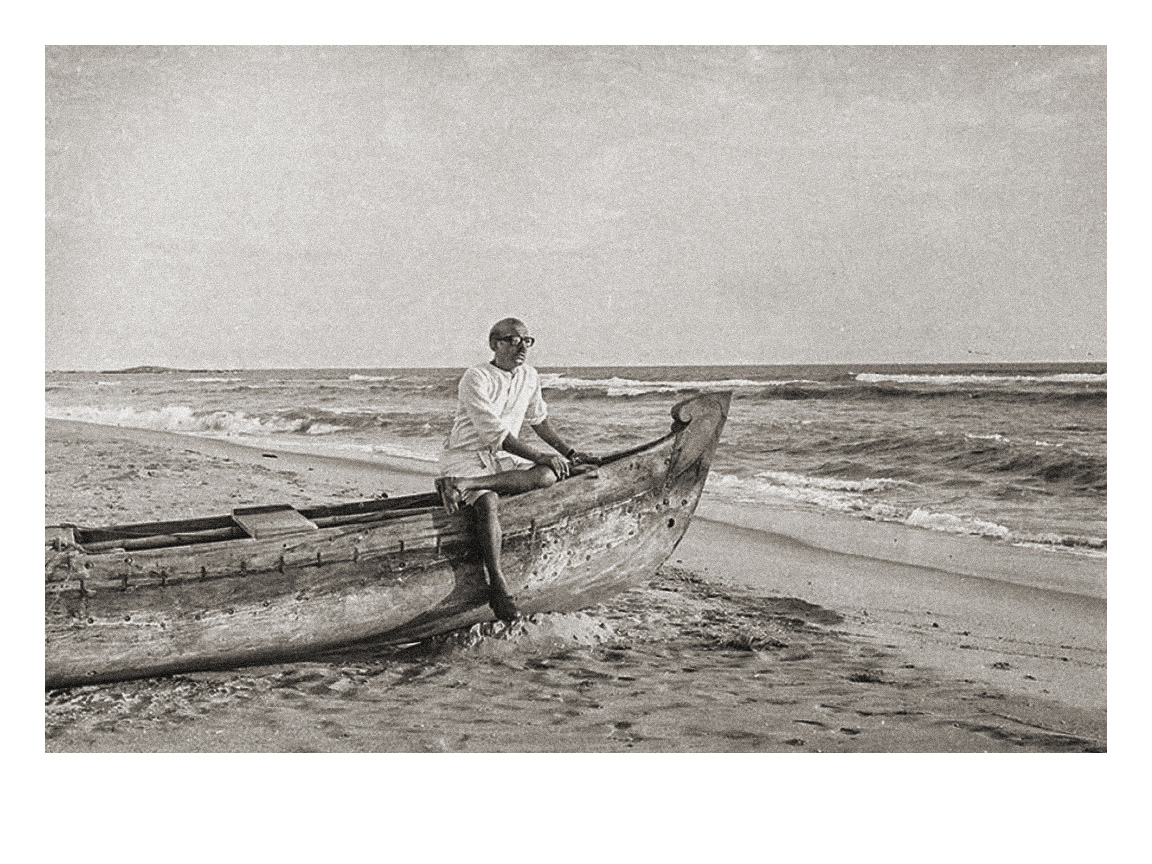
Vaikkom Muhammed Basheer © Punalur Rajan
Take his photograph of Basheer on the beach. The composition is so perfect that it gives the feeling of an infinite expansiveness. It is the poetic ambiguity that triggers this emotion. Can you imagine – if only the full boat was in view, then the entire feel would be totally different. It would narrow down our perception and give an altogether different meaning. It must have been his conscious choice to not include anyone else in the frame. The lonely figure on a beach is a wonderful rendering of the mystical loneliness of Basheer. Could it have been shot on a sober early morning when no one was yet awake? Or was it an abandoned boat on a desolate beach? The angle is also so chosen that the enigmatic personality of unassuming Basheer becomes palpable. We do not know what Basheer is looking at. Was it a man walking by, a boat crossing, or a dog playing around, or was he lost in an imaginary world of words and phrases, or could it be that the traveler in Basheer was already on a dreamy journey across time and space? Was Rajan accompanying Basheer during a solitary walk and decided to frame the moment? Or did Basheer pose for him fully aware of him being photographed? I feel that Rajan was fully conscious of what he wanted to photograph; a moment that converges and signifies all movements before and after that shot was made. The viewer’s knowledge about Basheer adds to the magnificence of this frame, but even someone who is not aware of who was Basheer, could connect with this photograph. In a single frame, Rajan tells the story of Kerala, its eons-old interconnectedness with other cultures and geography across land and sea. It talks of loneliness and lost loves. It tells the story of the first voyage made some 2,000 years ago. It reminds us of one of the lands and lives swallowed underwater. It is the story of the tree that became a boat and which would one day become a part of the very earth. It is the song of every man and woman, and all their fulfilled dreams and unfulfilled virtues. It is this and many more.
In popular understanding, photographic images are expected to exaggerate and beautify a person or an event. The magnificent, exotic, dramatic, and the otherworldly are preferred to the ordinary, straightforward, and minimal. Rajan’s photographs are bent towards the latter as it provides a realistic view. Of course, there is no reality in photographs and every photograph goes through a process of editing and manipulation. However, the general rule of documentary photography is to capture it as raw and natural as possible. But, Rajan’s intervention is in choosing that converging moment that brings out an essence that is raw yet touches the very core.
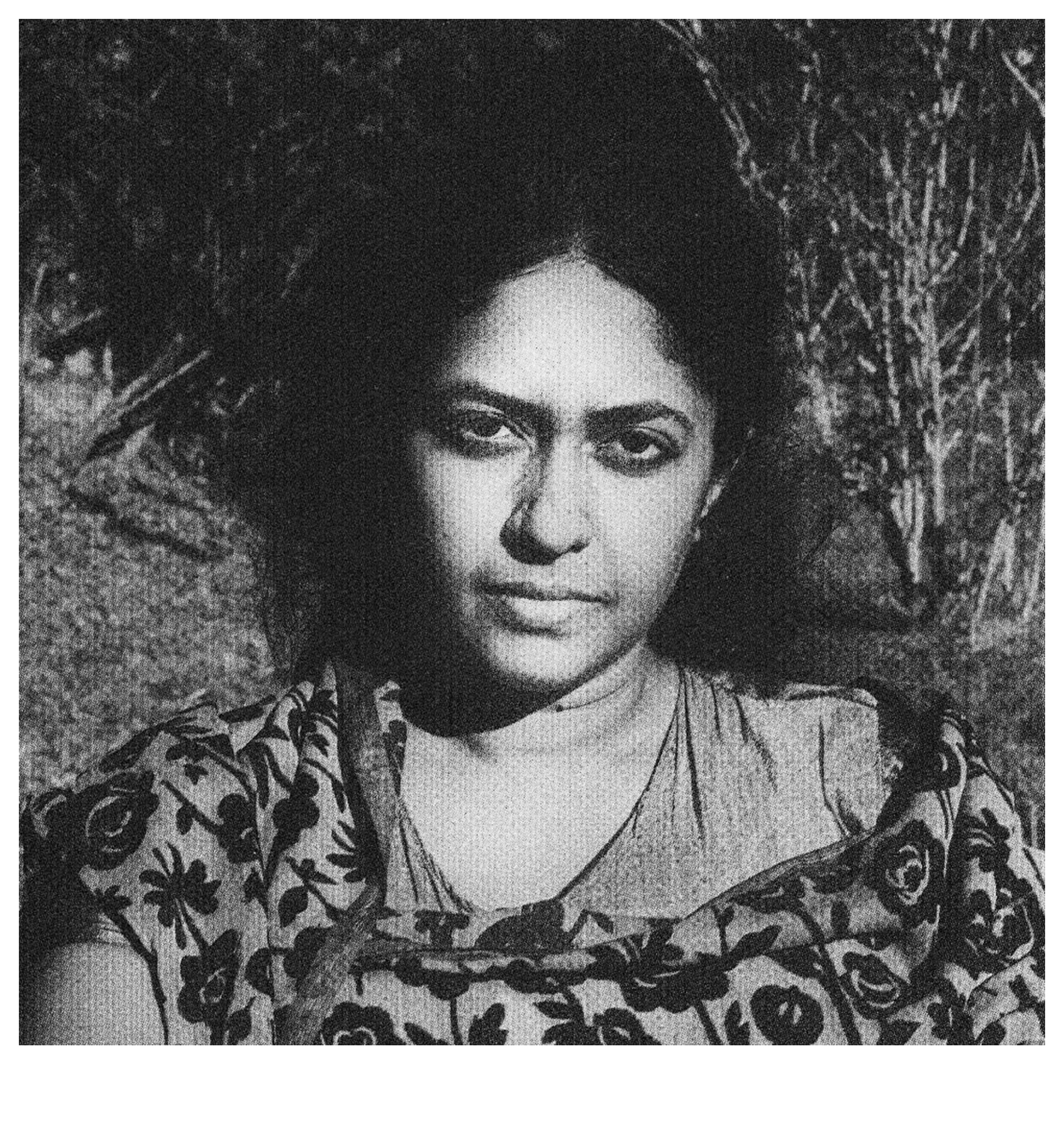
Madhavikutty © Punalur Rajan
Take the photograph of Madhavi Kutty for example. Her elegant smile and bold pose are poignant and rebellious at the same moment — an icon of modernism indeed. Rajan knew about the discourses on the prejudiced colonial as well as the male gaze, both of which are absent in this photograph. Here there is an acknowledgment, a mutual recognition between the photographer and the subject. In that now-eternal moment, the artist in him was acknowledging the artist in Madhavi Kutty. It was a gaze that was equal, probing, and revealing. Rajan had once said that he was envisioning the Mona Lisa while making this portrait and hence chose that particular pose and angle. This reference is absolutely stunning. His focal point was not just the amazing person in front of him, but a timeless classic that had held the world in fascination for well over hundreds of years. Only a mind filled with myriad thoughts of art, its history, and meaning could conjure such an imagination. He was not exoticising or romanticising, but beautifully representing the persona that Kamala Das was. In fact, similar observations could be made about the many photographs of women that Rajan had made. His exposure to different cultures and his amicability that grew through comradeship with women filled his gaze with mutual respect and equality.
While reading Rajan’s works, one cannot avoid juxtaposing them with that of Sunil Janah and drawing a comparison. Both of them were encouraged and presented by the Communist Party. They were firm believers of socialist ideologies, especially that of the United Communist Party. Sunil Janah also had done expansive documentation of the Communist Party and its leaders. While Sunil Janah was known nationally and even acknowledged internationally, Rajan’s sphere became limited to this region. I think it is because he became too regional. While growing radical roots is very important, at times it limits one’s circle. Devoid of such national/international exposures, no creative person can make a mark. Rajan did take photographs of national figures. Those are powerful pictures, but they didn’t get him that much recognition. Both Janah and Rajan were from the social documentary genre and had a flavor for the journalistic approach. But, Janah had shot historical events like the Partition, the Famine, and such that brought him more attention. That way, Kerala is truly a “God’s own country” — except for the last three years’ heavy monsoon and floods and now the pandemic that has caused disruption to normal functioning — as our lives were more or less uneventful. Yes, there were yearly floods, regular protests, and some unrest, but we didn’t have such major events that regularly took place in the other parts of India. Photographs of political, environmental, and related disasters have a demand, as they have the potential to stir-up immediate attention. That way, an uneventful photograph of an unknown individual or a familiar landscape, however powerful that might be, doesn’t bring that much fame. Anyways, I feel that there is an element of exoticisation in Janah’s pictures, especially his photographs of the naked indigenous women. However, Rajan’s view is that of his own people, an eye that recognized that he was one among them. This is probably because the oft published photographs of Rajan were often from his own circle. He only shot the familiar people, familiar surroundings, familiar events – the ones that he was ideologically committed to. When we photograph an event of agony, how much ever level-headed one is, there will be an element of top-down tendency. There is someone who is suffering or undergoing a violation and there is someone else with the tool and power to tell the world about this particular tragic experience. When these two parties come together, there is an inevitable disparity and position of privilege that segregates how that particular event is experienced by both of them. Rajan deliberately avoided such circumstances and events. Rajan’s was an insider’s myopic view and there was neither alienation nor “othering” that comes from a position of privilege. He saw his subjects with adoration yet with an unwavering understanding of equality.
Another important difference is the element of commerciality that is evident in some of the photographs of Janah. Rajan’s photographs do not show any sign of commercial interest. It was a pure expression for him. He didn’t make photographs of some historical events that could have brought him instant popularity. Basheer’s death for example. He was very much there. The eyes that documented almost every move of Basheer didn’t attempt to capitalise on the occasion. He rather chose to mourn the death of his beloved. Any other photographer in that circumstance would have photographed the occasion. He was a lover, a friend, and an artist at heart and he considered his role as a chronicler only secondary.
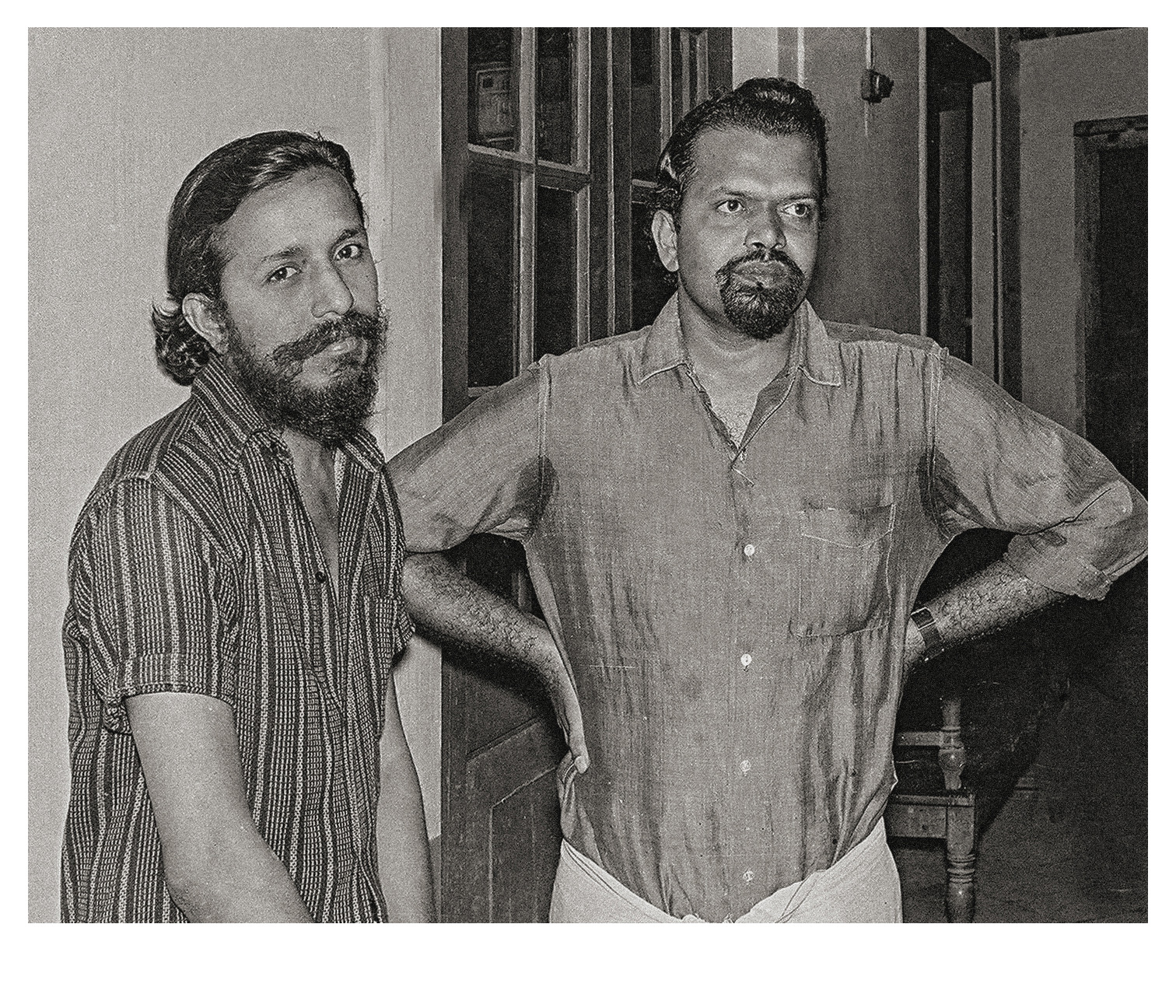
John Abraham with G Aravindan © Punalur Rajan
There is one photograph that comes to my mind – John Abraham with G Aravindan. That is one of the very few photographs that depict John’s beautiful mind. These days we take and circulate photographs so haplessly, often not consciously being aware of their power to influence opinions. The way we look at a photograph indeed varies as per the information that we possess and our opinion about a person influences how we read a portrait. It is also true that photographs can aid in developing the character of a person. The often circulated John’s photographs portray a totally different picture of him. But, in Rajan’s photograph, I remember John as I had first met him. It is the fond memory of the quiet, shy, respectful, mischievous, humble, and smiling John with eyes that shine with dreams and promises. I remember several tug-of-war situations between John and G Aravindan – the serious expression of G Aravindan in this photograph attests to the tender yet firm stance that he often took towards his naughty friend.
Activism coupled with his interest and knowledge in painting was influencing Rajan’s photographic works. He was a humanist at heart and his understanding of people and their personalities become visible in his photographs. He had several other qualities that find expression in his works. However, I used to always wonder about that particular unknown phenomenon that makes his works distinct; a missing piece of the puzzle that adds the dimension of imagination to his works. It was only after meeting him I found that missing piece. Rajan was a poet at heart. In fact, during his school days, Rajan used to write a lot of poems and he chose ‘Punalur Rajan’ as a pen name while publishing in some odd magazines. He retained the name when he started publishing his photographs. Actually, Rajan saw photography as a continuation of poetry. They are two different languages, both wielding the powers of thought and imagination to connect and communicate. It reconfirmed my understanding that Rajan saw himself as an artist and not just as a chronicler or content maker. I feel that we must also look at his photographs that way. When we stop looking just at the famous personas and the historical narrative it points to, his photographs reveal the hidden aesthetical pleasure and joy that one can experience by looking at an artwork. Yes, the information contained in his photographs is valuable, but it was not mere fact/information that he was communicating. The encoded signs and symbols in his works need to be decoded. A mind filled with factual information cannot fathom the world of visual imagination.
I met Rajan for the first time after he had retired from the Kozhikode Medical College. It was Ravindran (Chintha) who had shared the contact number and connected us. In the mid-90s, when I was working with the Press Trust of India, I wanted to archive the Communist Party history through the existing photographs. The idea was to collect the photographs and establish a central archive and publish a photo-book. Janah and Rajan were the two photographers who had done an extensive body on this. During this time, it was almost like an obsession for me to talk about the gap in our archiving process. In the West, the government, museums, and cultural organisations were already archiving photographs seriously. Not only that they were making efforts to archive their own assets, they were also collecting our photographic prints and negatives. Here, because there was no value, they were often discarded or sold off for a meager price. I spoke about this with almost everyone I met and once Ravi told me that I should take this forward and speak with Rajan. I called him, and it was one of the longest calls ever. He immediately agreed to the idea and suggested that we could meet and discuss a way forward. Inspired, I spoke with a few party leaders, including Lt. Com. P Govinda Pillai. He had suggested that I draft a proposal. That also I did, but unfortunately, nothing happened afterward. When I shifted back to Mattancherry to continue my independent practice, I thought of doing it with my own resources. It was around this time, sometime in 2000, Ravi called and informed that Rajan was on his way to Malaysia to meet his daughter and that he has a few free hours in Kochi. He needed a space to rest a bit and had expressed his interest to meet me.
That was a splendid day. A day with a master whom I greatly admire. That was the day I found about his interest in poetry and his reasons for not following cinematography. That was the day I also realised his waning interest in photography. He sounded disheartened. I could only speculate about the possible reasons. A photographer is a primary archivist. Like any passionate photographer, Rajan too took special care to appropriately protect his creations. I had told him that we must somehow raise money and archive his works. He too affirmed. However, a few months down the line, I realised that I neither had the resources nor the connections to make that happen. Since then, every time we met or spoke over phone, I would inquire about his photographs. With every passing year, he was becoming more disinterested, to the point that once he told, “I have retired from photography”. Come on, there is no retirement for a photographer. Only out of total dejection could such words come from someone who had made that much contribution. When I had met Janah he was almost losing his eyesight, but was continuously engaging with and visibly exhibiting his undying passion. Was Rajan losing interest in photography because he was becoming disillusioned or because he didn’t have the support structure to continue his practice? I very much wanted to support this artist to preserve his photographs. Archiving the works of a photographer when he is alive is very important, for he has information and background stories that can never be documented otherwise. The missing information is a historical loss. But, I was also sailing in the same boat – unable to keep myself afloat – struggling to create more photographs and preserve the ones already made.
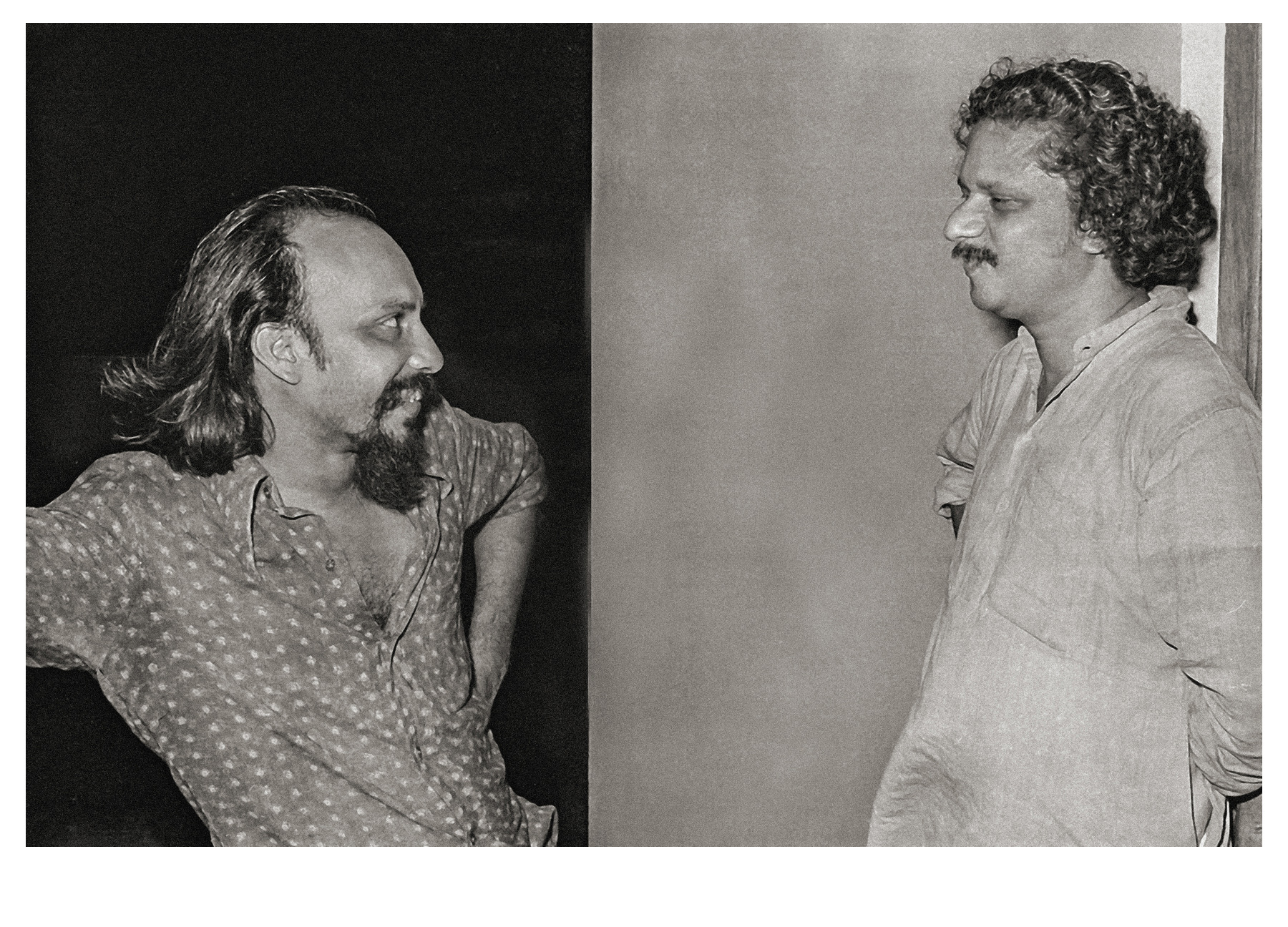
Chintha Ravi with Adoor Goplakrishnan © Punalur Rajan
I never took a photograph of Rajan. With Janah also I didn’t. I greatly admire these two Indian masters. Even though there were occasions when I could have photographed them, I wasn’t ready. For me, before taking a photograph, I had to develop a level of familiarity and connectedness. Only then I can take a photograph. That is the reason I failed to take photographs of many persons whom I wished I had. Unfortunately, I never met Rajan and Janah that many times and my reverence for them prevented me from taking random shots. In 2016, I had called Rajan again on behalf of PhotoMail, an online magazine which I am editing. I wanted to do an interview with Rajan. Initially, he was resisting, reiterating, “Abul, I am now retired”. But, I insisted, and eventually, he agreed. He asked me to come in person and do the interview. I explained that I was based in Tiruvannamalai and would be sending another photographer not a journalist to do the interview. He agreed. I requested my friend Hariharan Subrahmanian to do the interview. Sharp 8 am on the appointed day, Rajan had called back asking, “Is the interview on for today”. He was meticulous like as he was always. I called Hari immediately and asked him to reconfirm the time with Punalur Rajan. This detailed interview is one of the interesting documents of Rajan. After reading and publishing the same, I had called Rajan again and thanked him for his sharing and wisdom.
Four years later, in 2020, I called Rajan again on behalf of the Ekalokam Trust for Photography. During this pandemic, when all our lives are toppled, to engage and keep the dialogue going, we planned an online group show titled Images of Encounter. In this show, legendary British photographers such as Martin Parr, David Bate, American photographer Robert Nickelsberg and many other prominent photographers’ works will be shown. I wanted to incorporate Rajan’s works as well. Rajan was not my close associate, but my connections with him was as of a fellow young photographer who greatly admired his work. I was surprised that he remembered me and felt elated when he recollected with fondness, “I had visited you in Kochi, right?”. This time too I had asked about his works. He told me that his negatives are managed and digitised by some photo studio in Calicut. I suggested that I could send someone to work with him to select the photographs. I wanted to show his unseen photographs. He was hesitant, as the COVID scene was at its peak. But, he was all too happy to be part of the show and suggested that I connect with Mangad Rathnakaran. I am very sad that he could not see the show, but the only solace is that I contacted at the right time and now we will have some of his works along with the legendary figures. Subsequently, the Images of Encounter show went online in September.
It is my strong assessment that Rajan’s works didn’t receive the recognition that they deserve. There were a few printed books, but they were all badly produced. I felt disappointed leafing through their pages. The spotting was not done and post-production was incomplete. It only gave a poor view of the marvelous photographer. Moreover, the main focus was about the star writers whom he had photographed, and not of the photographs themselves. In this context, the efforts of my long-time friends Mangad Rathnakaran and OK Johny are noticeable. They took a special interest and were instrumental in showing some of the works as part of the Biennale. As much as it is appreciable, I still felt that Rajan’s works weren’t properly represented. They were once again about the prominent events and persons he had photographed. Unfortunately, Rajan didn’t even get to see this show and only heard words spoken about that through his friends and well-wishers. Such international events must have a larger and dedicated space for showcasing our master photographers. Also, photography and its presentation around the world have changed profoundly and have metamorphosed into far greater levels. They are no longer mere frames hanged on walls, but are shown these days as installations, crisscrossing with other media and art forms. Sadly, so far, Rajan’s works have not been collected by any museums and cultural organisations, within Kerala and outside. People also don’t buy his marvelous prints. In our society books are sold edition after edition, and there people continue to buy them. But, why no one buys a photograph? Rajan had to work his day job to survive as his family responsibilities were demanding him to limit his passion. If he didn’t have that pressing day job, he surely would have created more works.
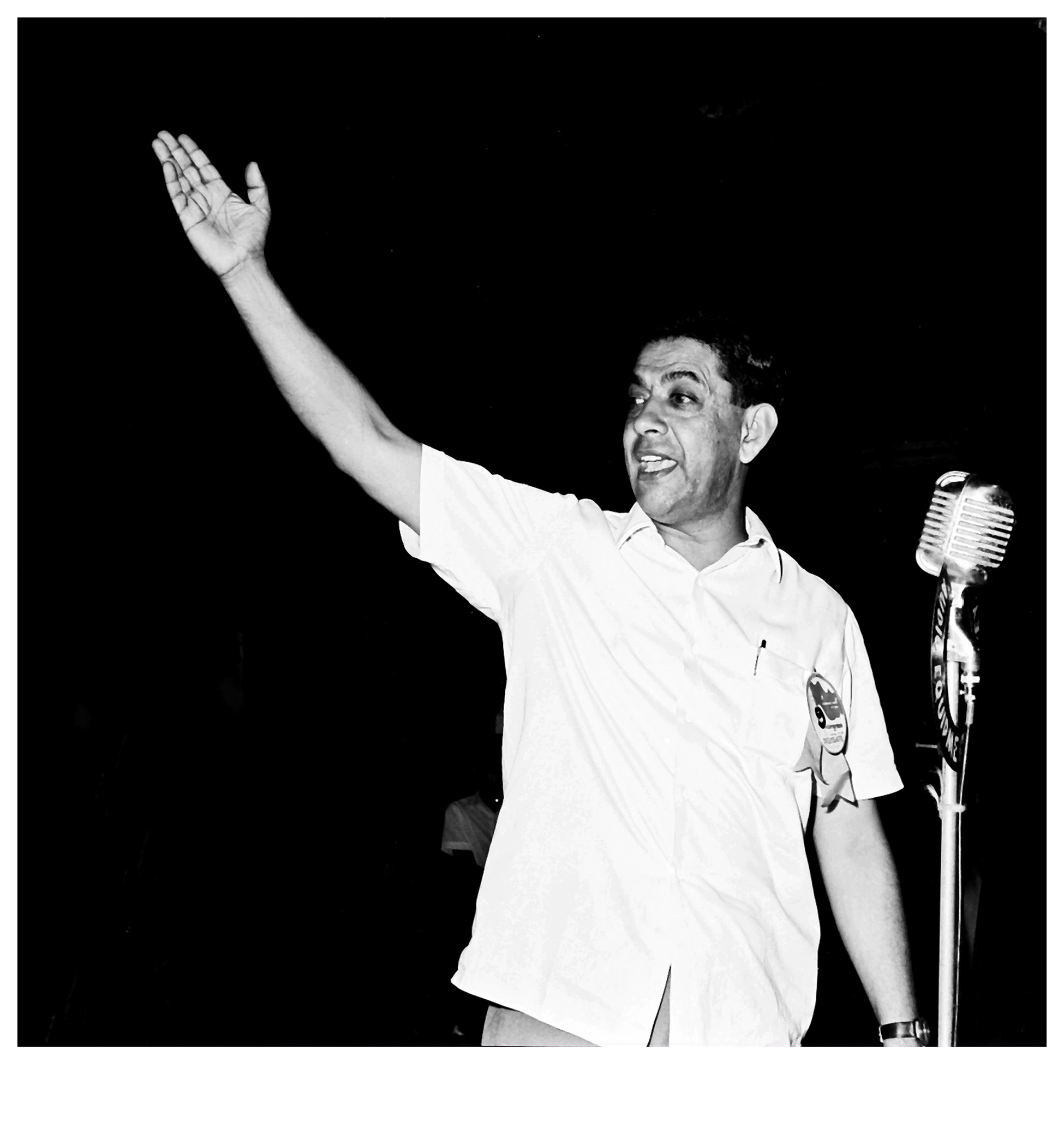
Indrajit Gupta © Punalur Rajan
The one question that has always bothered me and continues to do so is what happened to Rajan’s other works? Logically, Rajan should have made many more photographs – other than the ones that piqued public and publishers’ interest. What happened to those photographs? What were his contributions as an artist with the medical college? Or was it a limitation on Rajan’s part and he actually didn’t shoot anything else? This is troubling. Rajan’s is not a singular case. It has happened with Razak Kottakal and several others also. The public could access only those works that were published, which the mainstream media felt important and sensational. After an artist passes away, we celebrate for a while. But why not pay attention when the artist is alive? Our cultural society cannot afford to repeat the mistake of the contributions slipping between our fingers. Every photograph is a valuable document – an epigraph for the future. It is both art and a cultural asset. History is only a part of it. But, more than that, photographs do have a perpetual existence as an idea, a thought, and an expression.
Nobody can believe that this versatile photographer never made other works. At this moment, we are actually in dark. This is why we cannot completely know the photographer that Rajan was. Any writing about Rajan is bound to be incomplete and half-baked. Rajan, his life, and works have a lot of grey areas that require further research. Rajan did everything that he could to preserve his creations for posterity. Every little acknowledgment, he received with a humble smile and a proud nod. During the peak of his career, Rajan did create a model photo book – something that was never published. He was open and receptive whenever anyone approached him. He did all that he could. The last video interview of Rajan was published by TRUE COPY recently. In that, he was cranking his favorite Bolex – as if he was performing a prayer using rosary – his undying passion escalating every moment as he touched his favorite equipment. Then why did Rajan stop photographing? Why wasn’t there any peer pressure and support to continue his practice? Why hasn’t there been a proper archiving of his works? Why was no proper retrospective till date? That’s why, at this moment of great loss, the question that we must engage is, did we, as a society, fail in some way or other?
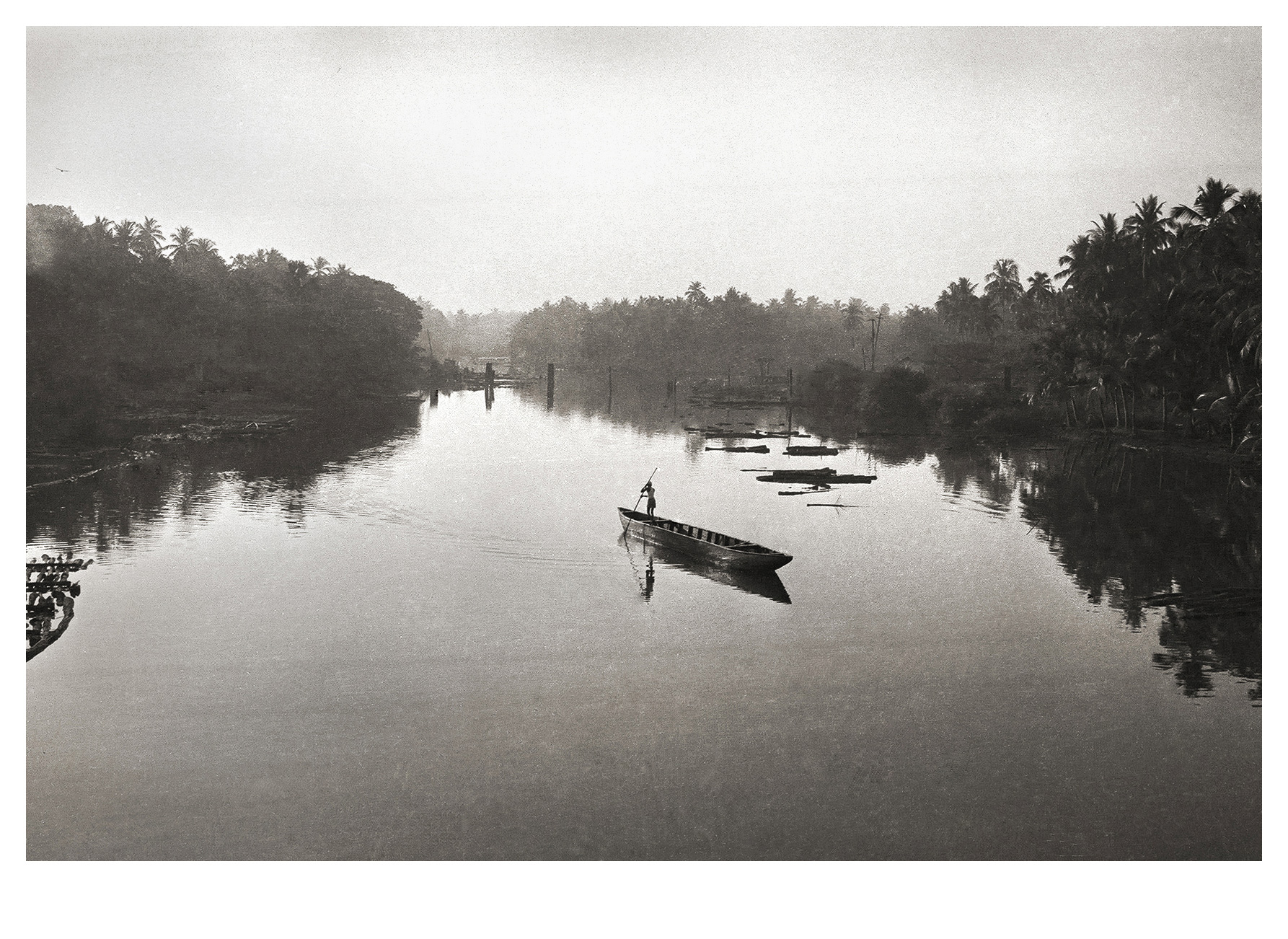
River Kallai © Punalur Rajan
Rajan was an enigma – a mystery that requires further unfolding. He was an important person in the history of contemporary Kerala. In the time to come, we will be forced to look back to his photographs; for his contribution is something that knows no bounds. He will live through the slices of history that he has left behind. No words could ever fully represent the politics and ideology to which he had dedicated his life. I leave my tributes to this remarkable person with the question – what are we going to do now?
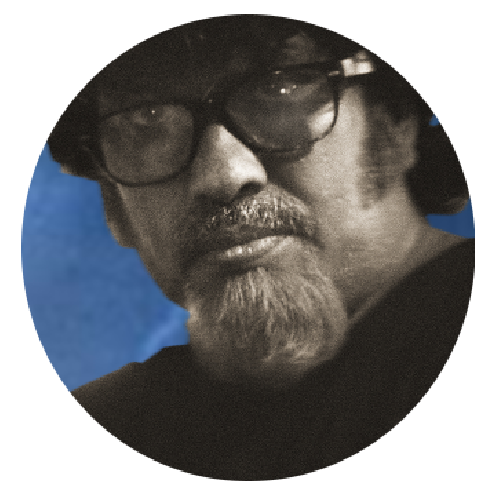
Abul Kalam Azad is a contemporary Indian photographer and Founder Chairman of Ekalokam Trust for Photography. He is also Editor-in-Chief of PhotoMail Magazine. Abul’s photographic works are predominantly autobiographical and explore the areas of politics, culture, contemporary micro-history, gender, and eroticism. His works attempt a re-reading of contemporary Indian history – the history in which ordinary people are absent and mainly provided by beautiful images and icons.
Published on November 22, 2020

